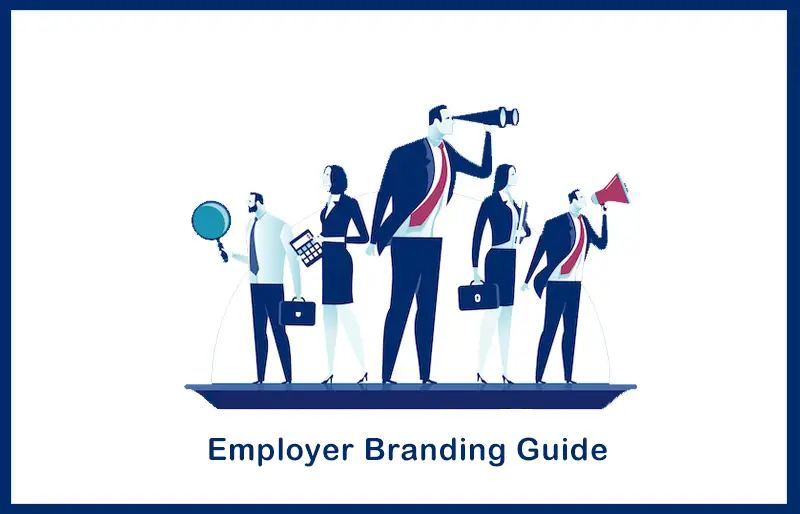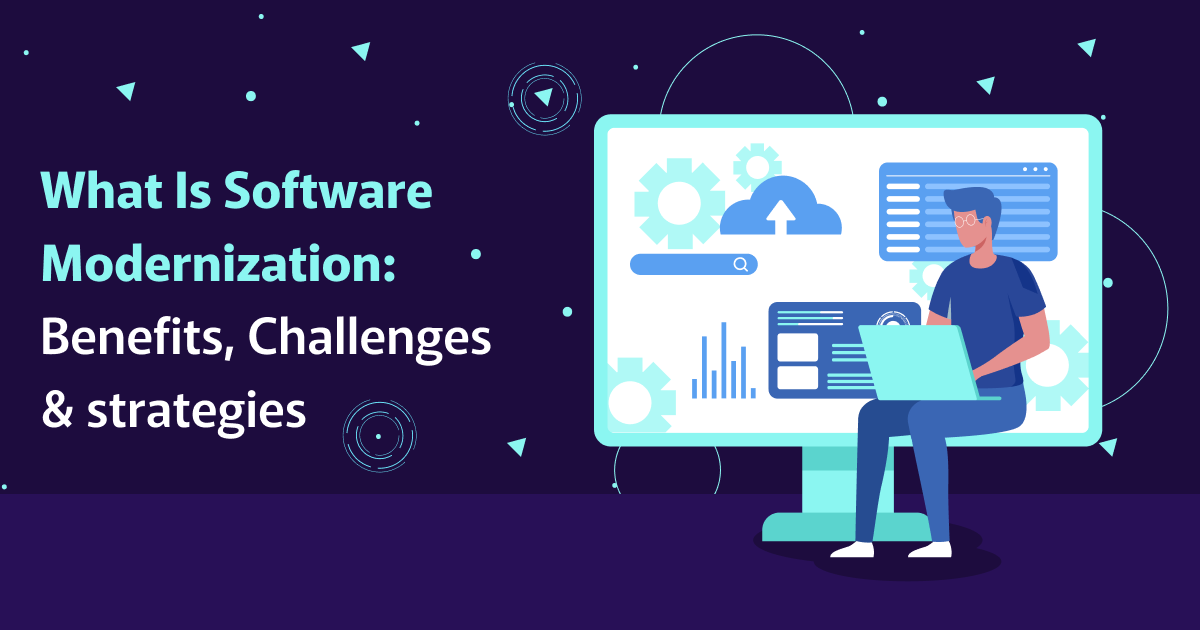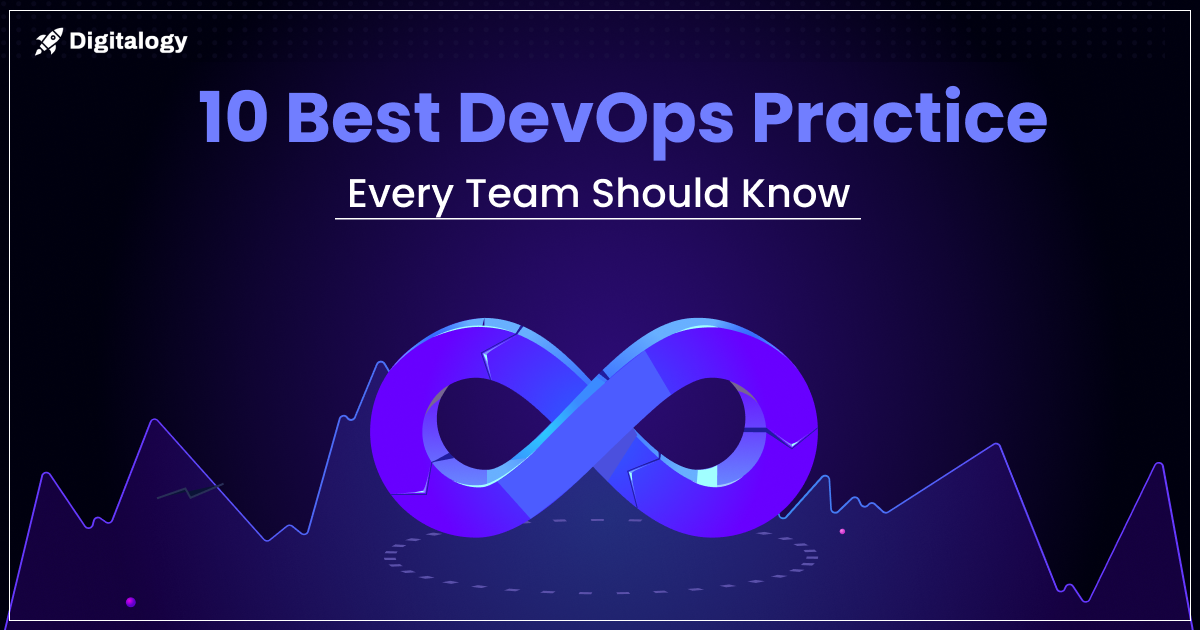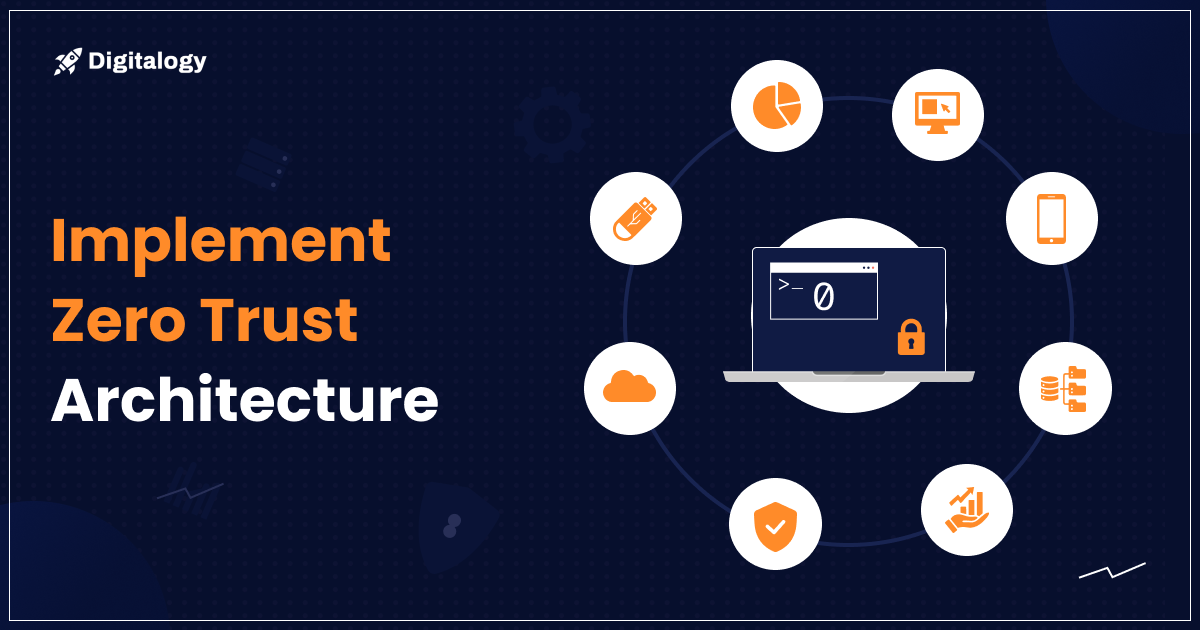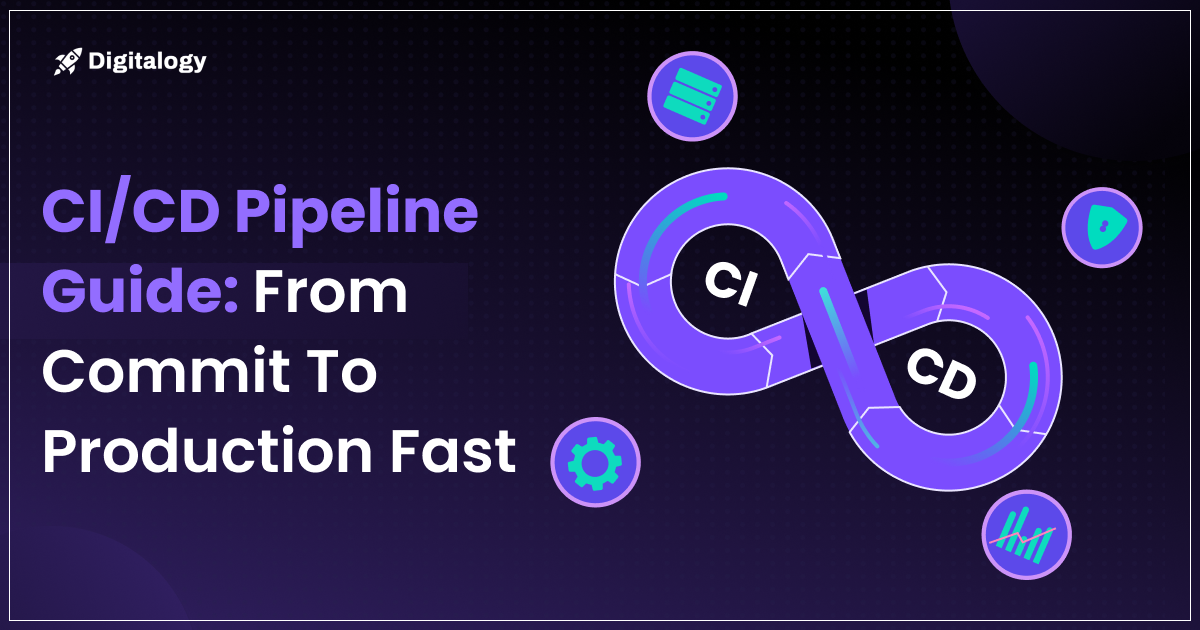Talent acquisition is no small task. A lot of planning and execution goes into the successful onboarding of the right talent but we often overlook a key aspect of this process, employer branding. By using the best employer branding strategy, employers can quite easily attract some of the best talents from the job market at a minimal cost.
And this is just one of the many perks of having a robust employer branding strategy.
In case you’re completely unaware of what employer branding is and how it can affect you as an organization or employer, fret not. We have penned down this article to cover virtually everything there is to know about employer branding, such as its benefits, how to measure it, how can you improve it, and some coverage on top global companies using market-leading employer branding strategies.
What is Employer Branding?
Unlike product branding whose target audience is your everyday joe, employer branding targets, or should we say, affect job seekers interested in your organization and your employees.
You see, employer branding is a collection of activities and efforts done by organizations to create and maintain a positive employer image among their current employees and potential employees.
By implementing the best employer branding strategies, your organization can effectively market its amazing work culture, perks, career opportunities, and several other unique benefits to gain the upper edge.
Here are some quick facts that will help you understand the impact of using the best employer branding strategy for 2025 will have on your organization.
- More than 86% of HR professionals now believe that recruitment has become more like marketing.
- Even when offered increased pay, 50% of the candidate pool states that they would prefer not to work with an organization with a bad reputation.
- 53% of the organizations would very much like to invest in employer branding if they had unlimited budgets.
- Roughly 64% of consumers would stop dealing with organizations that treat their employees badly.
- An average of 7 out of 10 people changed their opinion about an organization soon after they replied to an online review.
Check out more interesting facts here.
How Employer Branding Benefits Your Brand?

Photo by Leon on Unsplash
Now that we’re clear with what employer branding is, let’s take a look at some of the many key benefits organizations can achieve by implementing employer branding best practices. Here are the top 5 of them:
- Attracting and Retaining the Right Talent
Employer branding strategy allows you to seamlessly market your organization’s well-defined employer branding. You can use employer branding to convey to others that you really care about the concerns of your employees which not only leads to longer employee retention but also helps attract well-informed candidates to your organization.
2. Reduce Recruitment Costs
Employer branding and recruitment go hand in hand. We all know that employer branding can give you the best talent but it does so in an extremely cost-effective style. Wondering how?
Think of it this way, if you already have a sizable and talented social media following, you can essentially skip out on spending additional money and efforts on raising awareness for your job openings, leading to more savings.
3. Reduce Time to Hire
Another impressive benefit of using the best employer branding strategy is that you can cut down your time to hire by quite a significant margin. The reason for this is quite obvious.
Having a strong employer brand gives you instant access to a much larger talent pool which you can use to fill out your job openings, which means you spend a lot less time and effort trying to spread the word and more time hiring employees.
4. Improve Employee Engagement
While promoting their employer branding, organizations often go the extra mile and share a number of insightful stories and experiences from their employees on their social media platforms. This plays a key role in encouraging the employees to deliver their best and get the recognition they deserve.
This is why organizations believe that by using the best employer branding strategy, they can significantly improve employee engagement, leading to much better employee productivity.
5. Remain Competitive in the Industry
The job market today has become an increasingly competitive sector and organizations are fighting tooth and nail to get a hold of the best talent out there. By using the best employer branding strategies and techniques today, organizations are coming up with a host of innovative ways to stay competitive in the industry, such as writing ingenious job descriptions, showing off employee skills, nailing the employee onboarding process, hiring for diversity, essentially anything that keeps them competitive.
How to Measure Employer Branding?
Organizations are now spending additional resources on cultivating an employer brand that strikes out from the rest by using the most innovative and best employer branding strategies available.
But before you start working on your employer branding strategy, you need to first measure it. Some of the metrics you can use to measure your employer brand are:
- Number of Applicants
This translates to the number of applicants your organization has to handle for each job role offered. 28% of organizations around the world believe that having a high number of applicants can be a good thing, but if you look at it carefully, you’ll notice that having even just a small number of high-quality applicants turns out to be much better than a huge crowd of applicants.
2. Cost Per Hire
Roughly 29% of organizations think that cost per hire is a significant metric to measure employer branding. And they may be correct. The recruitment process can include charges for loads of activities like advertising, assessment, and so on, which can significantly shoot up a hire’s cost. But with powerful employer branding, much of this cost can be easily mitigated.
3. Time to Hire
Time to hire can be another major factor in measuring your employer’s branding. It’s the time elapsed between engaging a candidate and then their successful acceptance of the job offer. There are a number of factors that can affect your time to hire, such as bottlenecks in your onboarding process, the strength of your employer brand, and a few more. But by using effective employer branding in recruitment, organizations can speed this up by almost two times.
4. Retention Rate
Every organization goes through tens, even hundreds of employees throughout its life cycle, but when organizations start seeing a rapid decline in their headcount, there may be a problem. That’s exactly what the retention rate indicates.
More than 38% of organizations believe keeping a close watch on this metric and taking all the possible steps to keep it under control may prevent any further decline in their employer branding
5. Quality of Hire
Quality of hire is quite possibly the most valuable yet the most difficult of all metrics to control in this list, at least that’s what some 29% of organizations believe. A good employer branding strategy can play a major role in ensuring that you attract the right individuals for the job role. And organizations can measure the quality of hire by how long the hire stays productive in their organization.
6. Employee Engagement
Employer branding revolves mainly around employee engagement as it’s a key indicator of how your organization is from the perspective of employees. And so far, only 33% of organizations have gone the extra mile to get the required feedback from their employees.
For this, organizations often use surveys, and exit interviews to gather the necessary insight and analyze how they can improve employee engagement.
How to Improve Your Employer Branding Strategy in 2025
If you think you’ve learned enough about employer branding and how it affects your organization and are eager to start working on improving your employer branding, let’s not waste any more time and get right to it.
It all starts with your organization being a good employer, the strategy comes later on. The strategy merely exists to promote your organization as the best place to work and to attract the most talented candidates to your organization. You can improve your employer branding with the below steps:
- Build a Strong Employee Value Proposition
The first step in improving your employer branding is to build a strong Employee Value Proposition as your employer branding revolves around it.
For an average employer, EVP includes everything that the organization can offer to its employees in return for their skills and services.
But EVP isn’t just limited to salaries, rewards, and benefits, it also includes factors like work environment, culture, and career development options. You also need to clearly communicate your EVP to candidates throughout your hiring process.
- Offer Learning and Development Opportunities
Another key factor in improving your employer branding is the upskilling of your employees.
By offering your employees the opportunity to learn and hone their skills, the organization not only ultimately achieves better productivity from its employees, but it can also help them advance in their careers.
With better employer branding, organizations can make sure that not only their employees but the candidates also know about all of their training programs, certifications, and development opportunities.
This can allow you to demonstrate via your employer branding that your organization focuses on continuous learning and development.
- Actively Post Meaningful Content on Social Media
Using just a single platform for promoting your employer branding has become a thing of the past.
Today, thousands of organizations rely on social media platforms not just to share the latest bits of information, but also to attract the top talent available out there.
By using rich and high-quality media like blog posts, videos, photos, and slideshows, organizations can efficiently share employee testimonials, thoughts, and feedback on their products and services. And each share, like, and comment helps spread the word about your employer branding.
- Involve Employees in the Building of and Delivering on the Brand
Employees can play a significant role in the development of your employer brand, after all, they’re the ones experiencing what your organization has to offer.
Organizations can leverage this opportunity to make it easier for candidates to know about the various aspects of working in your organization like the work culture, perks, and benefits of their employees.
They can also ask their employees to post company news, update their online profiles, review the organization on review websites, and such to actively involve them in building their employer brand.
- Conduct an Employer Brand Audit
It’s always a good idea to take a moment and conduct an audit of your employer brand to find out how the organization is presenting itself to both its employees and candidates and what can be improved.
Some of the many ways organizations can do this include reviewing your job descriptions, social media profiles, onboarding materials, conducting surveys both internal and external, and gathering feedback from employees.
Once enough data has been gathered, the organization should be able to identify the gaps and plan what needs to be done.
- Be Proactive on Career Sites
The first place candidates get to know about your organization are the career sites and naturally, these websites should always be on the top of your priority list.
One such website is Glassdoor, where employees, candidates, and organizations come together to share insights about the job. Here, employees post the good, the bad, and the ugly about their employer which anyone can see.
Although you can’t control what people post about your organization, you can address it proactively, instead of ignoring or hiding from it, to maintain a positive employer brand.
Employer Branding Examples
We’re sure that by now, it must’ve become clear why organizations are obsessing over building/improving their employer branding. Whatever the scale of your organization, employer branding has become an absolute necessity today for the reasons discussed above.
Before we wrap this article up for good, we would like to share a handful of employer branding examples straight from some of the biggest corporations in the world.
1. Google
Google needs no introduction. The search mega-giant has one of the best employer brands in the world. This is the reason it receives millions of job applications each year but picks up only a couple thousand. The number one reason behind this popularity is the benefits it offers to its employees which shows in its efforts. Their Careers page gives candidates an idea about the jobs in various domains Google has mastered.
2. Microsoft
Microsoft is another key player in the software industry that never shies away from promoting its remarkable employer brand to people around the world. For that, it uses social media platforms like Instagram to share inspiring stories about its employees which also allows them to capture their prospective candidates’ attention. Apart from offering a range of employee benefits, Microsoft also regularly organizes several events like employee training and hackathons, that bring hundreds of its employees together.
3. IBM
When it comes to promoting their employer brand, IBM isn’t far away from the rest of the industry leaders. Their online presence spans all major social media and networking platforms, where they share things like the challenges an IBMer tackles, their work-life, feedback, and so much more. For candidates, IBM ensures that they offer up-to-date information on job opportunities along with a complete insight into their hiring process.
4. Starbucks
Apart from promoting its coffee, the world-renowned coffee house Starbucks also does an excellent job promoting its employer brand. Over the years, Starbucks has cultivated a strong community that includes its employees. The brand uses a separate Twitter and Instagram account to share the work-life at Starbucks and communicate with candidates. Apart from that, Starbucks also uses these mediums to share employee stories, company missions, and so much more.
5. Shopify
Shopify is a popular e-commerce building platform that has also mastered the art of spreading awareness about its employer brand. And the first place that you can witness that is their careers page. It is filled with what they do, how they work, their hiring process, their mission and goals, and stories right from the employees at Shopify. And
their presence isn’t just restricted to their website, it spans multiple social media platforms such as Facebook, LinkedIn, Twitter, and the likes, where they constantly share updates to attract talented individuals.
Final Thoughts
As easy as it may sound, employer branding can be a complicated process. By having the right employer branding, organizations can make the perfect first impression on their candidates every single time. There are loads of factors that go into consideration while working on employer branding. The goal behind this article was to give you plenty of insight into the factors encompassing employer branding and its impact on organizations today. We hope you’ll consider these pointers while developing your employer branding.
Frequently Asked Questions (FAQs)
Ans: The practice of establishing a favorable perception of your organization as an employer is known as employer branding. Making your business an attractive place to work and expressing the value of your organization to both existing and prospective workers are necessary.
Ans: Employer branding is crucial since it may aid in luring in and keeping great candidates. Top talent is in high demand in today’s cutthroat work environment. You can differentiate your business from the competition and entice the best and brightest employees by developing a great employer brand.
Ans: You may evaluate the success of your employer branding plan in a variety of ways. You may monitor statistics for job applications, social media activity, and website traffic. To gather their opinions on your corporate culture and their general job happiness, you may also poll your staff.
Ans: Employer branding has a promising future. Employers must exert greater effort to entice and keep top talent as the employment market gets more competitive. Employer branding will become more significant in this procedure.
Ans: 1. Focus on Employee Experience
2. Use data to inform your strategy
3. Personalize your approach
4. Embrace the power of social media
5. Be Authentic

